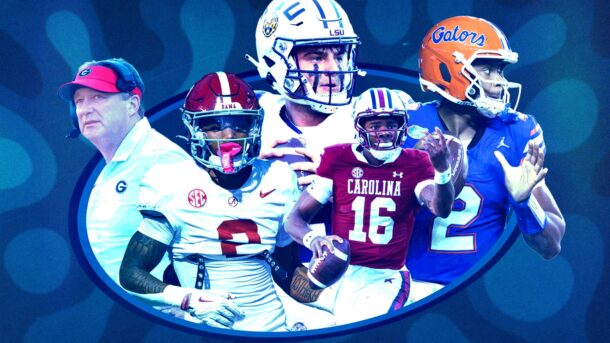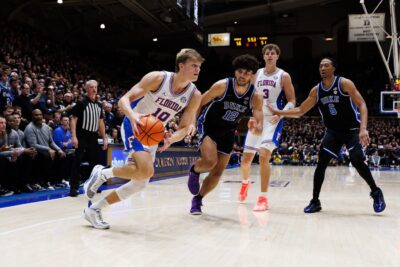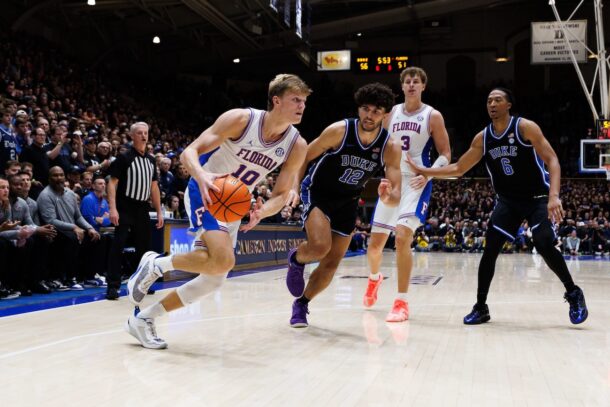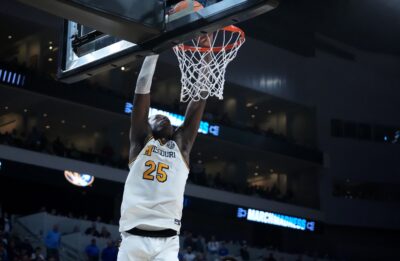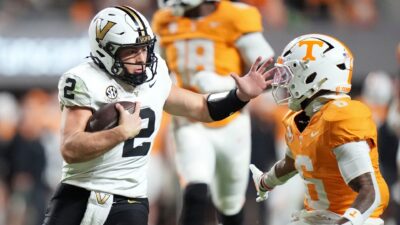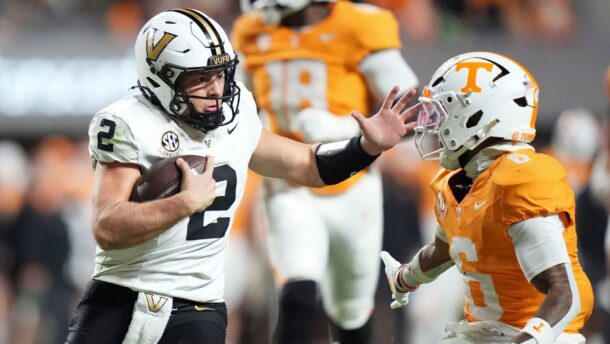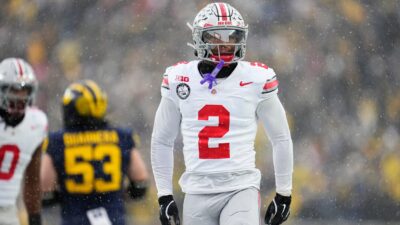In a span of two seasons (24 games) from 2012-13 — the last season of the Joker Phillips era and first of the Mark Stoops era — Kentucky’s defense allowed a whopping 43 touchdown passes and logged just eight interceptions.
That’s a touchdown-to-interception ratio of better than 5:1, which is, let’s just say, less than desirable. Kentucky ranked ninth or worse in the SEC in pass defense each of those years, and UK’s inability to defend the pass was one of many reasons the Wildcats went 4-20 (and 0-16 in the SEC) during that time.
But something changed last fall, something that elevated the play of the UK secondary to a respectable level. The secret ingredient? Experience.
Kentucky’s 2014 secondary was among the most experienced position groups on the entire roster, and the growing pains suffered in 2012 and 2013 ultimately benefited the unit last fall.
Cornerbacks Fred Tiller, Cody Quinn and J.D. Harmon were all third-year players last year (Tiller and Quinn were juniors, Harmon a redshirt sophomore who sat out 2013), and all three have played major roles on the Kentucky defense since their collective freshman season in 2012, when Phillips was leading a depleted program.
The trio served as three of the team’s top four cornerbacks in 2012, and all three were thrust into action prematurely against some of the SEC’s best wideouts.
During the same 2012 season, then-sophomore safety Ashely Lowery broke into the starting lineup and began acclimating himself with the speed of the SEC. The first-time starter struggled early on, and playing behind three cornerbacks as inexperienced as he was did him no favors.
By the end of the 2012 season, UK had recorded just five interceptions, only four of which were logged by defensive backs. Harmon was the only man on the team to record more than one, which tied him for 44th in the SEC in that category.
The 2013 season wasn’t any kinder to the secondary (due in large part to the stellar seasons posted by star quarterbacks like Aaron Murray and Connor Shaw), as UK recorded just three total interceptions, with Lowery’s lone pick serving as the only interception by a defensive back all season.
That’s right, Kentucky played 12 games, including games against unheralded foes like Western Kentucky, Miami (Ohio) and Alabama State, yet managed just one interception from its defensive backs.
That’s so dreadful it’s almost impressive.
But as UK’s secondary struggled through those seasons, it began to improve incrementally. The Cats allowed just below 230 yards per game through the air in each of those two seasons, but as time wore on the secondary began to limit big plays and pick up on a few tricks of the trade.
Which brings us to 2014. Last fall, Kentucky intercepted a whopping 15 passes, nearly double its total from the two previous seasons combined, and better yet, 12 of those interceptions came from defensive backs.
Tiller, Quinn, Harmon and Lowery were all upperclassmen, and all three relied on their failures from 2012-13 to raise the bar in 2014. Lowery began reading quarterbacks better, and the corners grew savvier in understanding how to play receivers in coverage.
The defense allowed only 215 passing yards per game, a solid 15 fewer yards per game than each of the previous two seasons, and they continued to keep plays in front of them, allowing the second fewest long completions (of 40 yards or more) of any defense in the SEC.
Those four experienced upperclassmen didn’t carry the secondary alone, but they did serve as a core to build around. Suddenly, the addition of a dynamic athlete at safety in junior college transfer A.J. Stamps was worthwhile.
Before 2014 he might have spent his Saturdays in the Bluegrass chasing footballs from sideline to sideline. But last year, with reliable teammates maintaining their coverage responsibilities, he was freed up to fly around and make plays, resulting in four interceptions in his first season in the SEC.
The same can be said for the Cats’ next group of young defensive backs, including guys like Blake McClain, Marcus McWilson and Kendall Randolph.
Unlike Tiller and Quinn and that bunch, these current underclassmen can learn by watching and not exclusively by doing. With experienced mentors to aid in their development and reduce the responsibilities they face against some explosive SEC offenses, those young players can grow at an appropriate rate, which should lay the foundation for an even better secondary down the line.
So as it turns out, Kentucky did manage to gain a thing or two from that disastrous two-year from 2012-13. Experience made all the difference last year, and as Tiller, Quinn and Stamps all prepare for their senior seasons in 2015 (Harmon will be a fourth-year player as well), the secondary is poised to look even better.
A former newspaper reporter who has roamed the southeastern United States for years covering football and eating way too many barbecue ribs, if there is such a thing.
